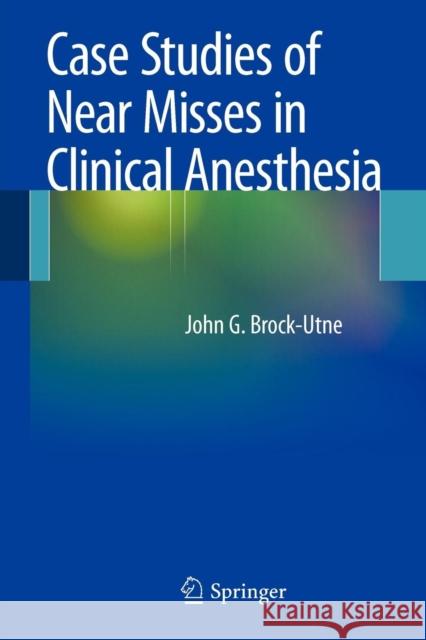Case Studies of Near Misses in Clinical Anesthesia » książka
Case Studies of Near Misses in Clinical Anesthesia
ISBN-13: 9781441911780 / Angielski / Miękka / 2011 / 236 str.
All anesthesiologists eventually face the fear of a "near miss," when a patient's life has been put at risk. Learning from the experience is crucial to professionalism and the ongoing development of expertise. Drawing on forty-plus years of practice in major metropolitan hospitals in the United States, Norway, and South Africa, John Brock-Utne, MD presents 80 carefully selected cases that provide the basis for lessons and tips to prevent potential disaster. The cases emphasize problem-centered learning and span a broad range of topics--from an outbreak of operating room infection (could it be the anesthesia equipment?), complications of fiberoptic intubations, and problems with epidural drug pumps, to performing an urgent tracheostomy for the first time, working with an aggressive surgeon, and what to do when a patient falls off the operating table during surgery. 80 true-story clinical "near misses" never before published, ideal for problem-centered learning, recommendations, references, and discussions accompany most cases, rich basis for teaching discussions both in or out of the operating room, settings include sophisticated as well as rudimentary anesthetic environments, complements the author's other case book, Clinical Anesthesia: Near Misses and Lessons Learned (Springer, 2008).
Although near-miss situations are fortunately rare in anesthesiology, it is essential to know how to respond if these situations arise. This collection of actual cases, compiled from the author s thirty-five plus years of practice in major metropolitan hospitals in the United States, Norway, and South Africa, is an excellent review of potential problems and solutions all anesthesiologists should be familiar with. Succinct case presentations describe a problem and the solution, with each write-up concluded by a retrospective analysis examining whether the solution used was actually the best (or only) choice. Other solutions and equally satisfactory outcomes are explored, and tips to help avoid problems altogether are presented where possible. This book may therefore serve as either an excellent review for the American Board of Anesthesiology s oral exam or as an easy and practical way for the reader to gain familiarity with unexpected problems in clinical anesthesia.











